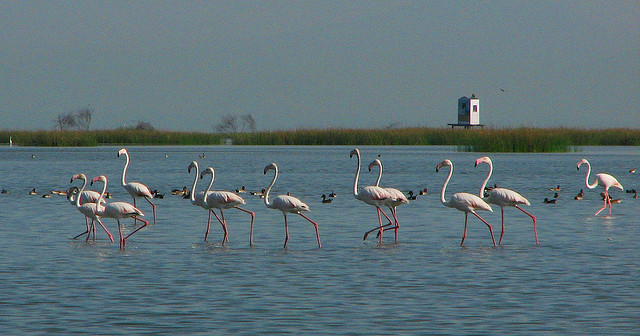Nalabana Island
The large Nalabana Island is a bird sanctuary covering around 16 sq Km of Chilika lake's lagoon area. The island is a paradise for bird watchers, which attracts around 400000 waterfowls of different species.

The large Nalabana Island is a bird sanctuary covering around 16 sq Km of Chilika lake's lagoon area. The island is a paradise for bird watchers, which attracts around 400000 waterfowls of different species.

2 km from Chandipur, Balaramagadi where the river Budhabalanga meets the sea, is a nice picnic spot and ideal for fishing and cruising. The fishing boats also provide an interesting sight.
At the foot of the Vaibhava Hill, a staircase leads up to the various temples. Separate bathing places have been organised for men and women and the water comes through spouts from Saptdhara, the seven streams, believed to find their source behind the "Saptaparni Caves", up in the hills. The hottest of the springs is the Brahmakund with a temperature of 450 C.
Two rather strange cave chambers were hollowed out of a single massive rock. One of the chambers is believed to have been the guard room, the rear wall has two straight vertical lines and one horizontal line cut into the rock; this 'doorway' is supposed to lead to king Bimbisara treasury. Inscriptions in the Sankhalipi or shell script, etched into the wall and so far undeciphered, are believed to give the clue to open the doorway. The treasure, according to folklore, is still intact. The second chamber bears a few traces of seated and standing guards etched into the outer wall.
Pippala cave is located above the hot springs on the Vaibhava Hill. Pippala cave is a rectangular stone sculpted by the forces of nature which appears to have been used as a watch tower. Since it later became the resort of pious hermits, it is also called Pippala Cave and popularly known as "Jarasandh ki Baithak" after the name of the King Jarasandh, a contemporary of Lord Krishna described in the epic Mahabharata.
The region of wild animals, rivers, lakes, and greenery is a major tourist attraction near Gaya. Located at the altitude of 300-900 meters, the plateau has verdant valleys to see and tribal culture of indigenous people in their original habitat is another attraction at the place. Tribes like Santhal, Ho, Munda, Oraon, Koi, Chero, Kharia, Paharia are really worth to observe and a silent study of their living and culture would really be a good idea.
Just one km southwest of the Vishnupada Temple is the Brahmayoni Temple. You have to climb up 424 high stone steps to get to the top of the hill. From the top of the hill you get a good view of the city below. Atop the hill there are two caves names Brahmayoni and Matreyoni, and a temple dedicated to Astabhujadevi.
At a distance of approximately 15 km from Bodh Gaya, the Dungeswari hills form a picturesque backdrop for the handful shrines and ancient Stupas which surround the cave which is believed to have protected prince Gautama for six long years before he finally left for Bodh Gaya and attained enlightenment. The prince had left all his earthly belongings and had accepted a life of suffering and misery.
Buddha is also believed to be an incarnation of Lord Vishnu and it is at the Lake Muchalinda that the SheshNaga or the Snake King Muchalinda protected his Lord from a severe thunder storm. The Buddha was meditating near the Lake during the sixth week when a strong storm broke out and the Lake waves started lashing the Buddha. Sensing the discomfort of the Lord the Snake King decided to protect him from the storm.
Consists of an outer apartment, bearing the high polish on its walls and flat roof. On the right hand wall, is an inscription record.